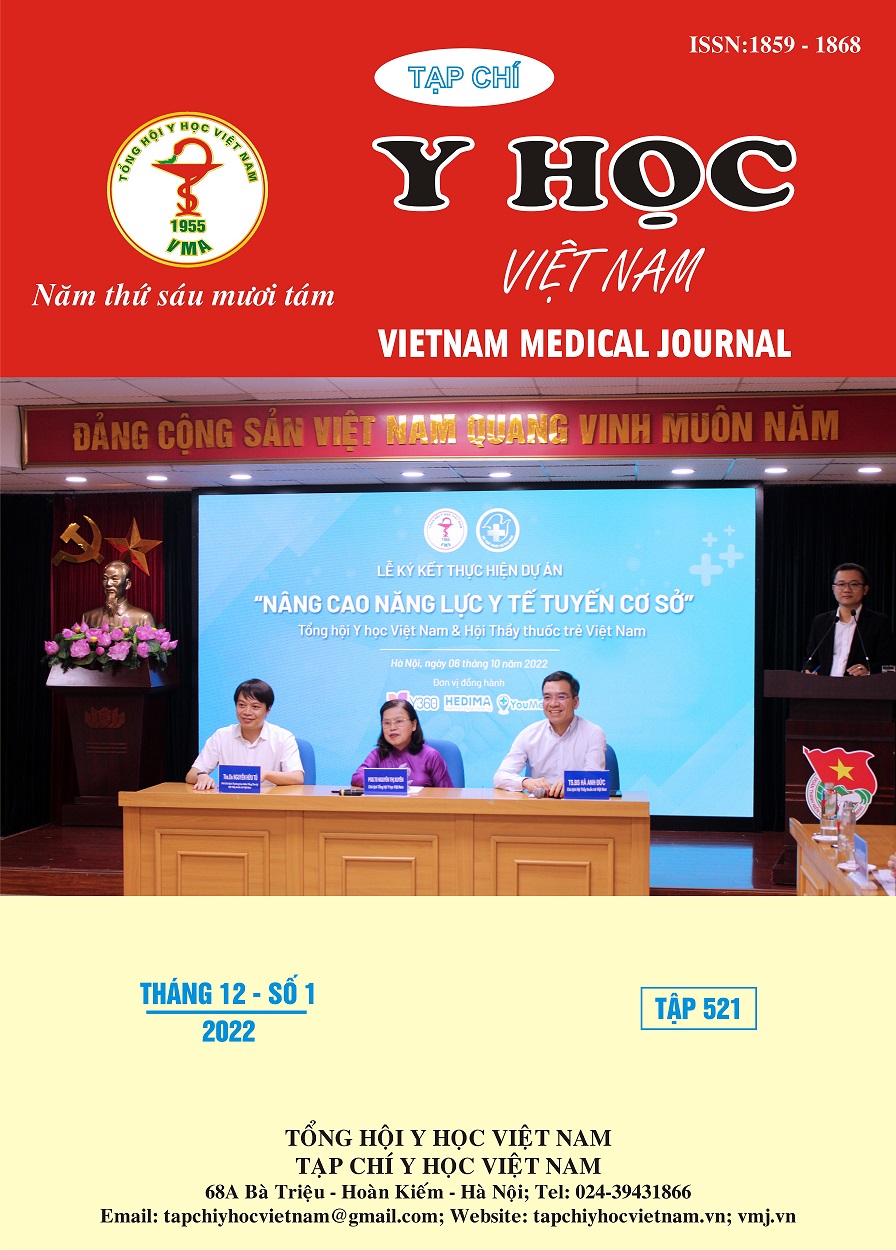CLINICAL, SUBCLINICAL AND CT FEATURES OF HEPATIC HEMANGIOMA PATIENTS
Main Article Content
Abstract
Background: Hemangiomas are the most common benign tumors of the liver. Not all hepatic hemangiomas have characteristic or typical imaging findings. Objectives: Describe the clinical, subclinical and compute tomography characteristics of patients with hepatic hemangiomas. Methods: This was cross sectional study on 49 hepatic hemangioma patients diagnosed according to the guidelines of the European Association for the Study of the Liver in 2016. On contrast-enhanced CT images, hemangioma showed enhancement peripheral in arterial phase, afferent enhancement in delayed phase; diagnosed by histopathology when the tumor is not typical enhancement on CT. Results: The mean age of the patients was 54.7 ± 17.1. Female accounted for 55.1%. Abdominal pain had the rate of 46.9%. 100% of patients had normal AFP. HBsAg was positive in 4.1%, Anti HCV was positive in 2.0% of patients. The rate of right hemangioma was 67.3%. Number of solitary hemangioma was 73.5%. Tumor > 4 cm had a rate of 67.3%. Tumor size ranged from 1.9 to 10.2, the median size was 5.9 cm. On CT imaging, hemangioma was clear boundary with the rate of 97.9%. Typical enhancement hemangioma was 93.9%. 2.1% of patients had intra tumoral hemorrhage. Calcification in the tumor was seen in 2.1% of patients. Conclusion: Most hepatic hemangioma patients have no abnormal clinical and laboratory symptoms. Diagnosis is mainly based on typical CT imaging, liver biopsy should be considered when CT imaging is atypical.
Article Details
Keywords
Clinical, subclinical, compute tomography, hemangioma
References
2. Kim J. M., Chung W. J., Jang B. K., et al (2015). Hemorrhagic hemangioma in the liver: A case report. World J Gastroenterol, 21(23), 7326-7330.
3. Liu Z., Yi L., Chen J., et al (2020). Comparison of the clinical and MRI features of patients with hepatic hemangioma, epithelioid hemangioendo thelioma, or angiosarcoma. BMC Med Imaging, 20(1), 71.
4. European Association for the Study of the Liver (2016). EASL Clinical Practice Guidelines on the management of benign liver tumours. J Hepatol, 65(2), 386-398.
5. Park J. S., Kim G. A., Shim J. J., et al (2021). Hepatic hemangioma presenting as a large cystic tumor. Korean J Intern Med, 36(2), 473-474.
6. Mathew R. P., Sam M., Raubenheimer M., et al (2020). Hepatic hemangiomas: the various imaging avatars and its mimickers. Radiol Med, 125(9), 801-815.
7. Dane B., Shanbhogue K., Menias C. O., et al (2021). The humbling hemangioma: uncommon CT and MRI imaging features and mimickers of hepatic hemangiomas. Clin Imaging, 74, 55-63.
8. Quaia E., Bertolotto M., Dalla Palma L. (2002). Characterization of liver hemangiomas with pulse inversion harmonic imaging. Eur Radiol, 12(3), 537-544.


